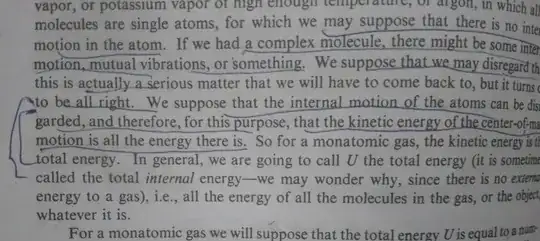If I have a Number of gas molecules in a container each having some velocity $v(i)$, what would be the $K.E$ of the gas?
Will it be the sum of kinetic energies of the individual particles or will it be $\frac{1}{2}mv^2$ where $v$ is the velocity of the center of mass? My book says we have to use the center of mass velocity but according to me the center of mass should stay at rest since there are no external forces (inter molecular attraction if exists is an internal force ) $$$$
What if the container is moving too? What will be the kinetic energy of the gas?
The sum of K.E's of particles (their velocity somehow calculated by adding the velocity of the container) or by using the velocity of the center of mass. If in the second case both the ways give the same answer please explain me how. And should we include the macroscopic K.E also in the Internal Energy or not $$$$
Please explain which way is the correct and also explain why the other method is wrong.
Edit This is after @sammygerbil last comment Please refer to my last comment in which I quote Feynman
